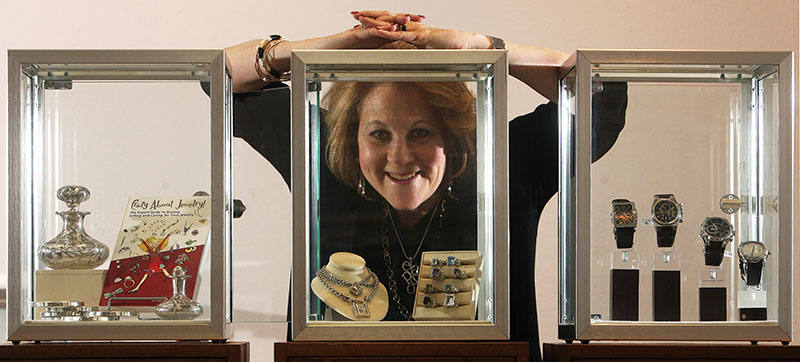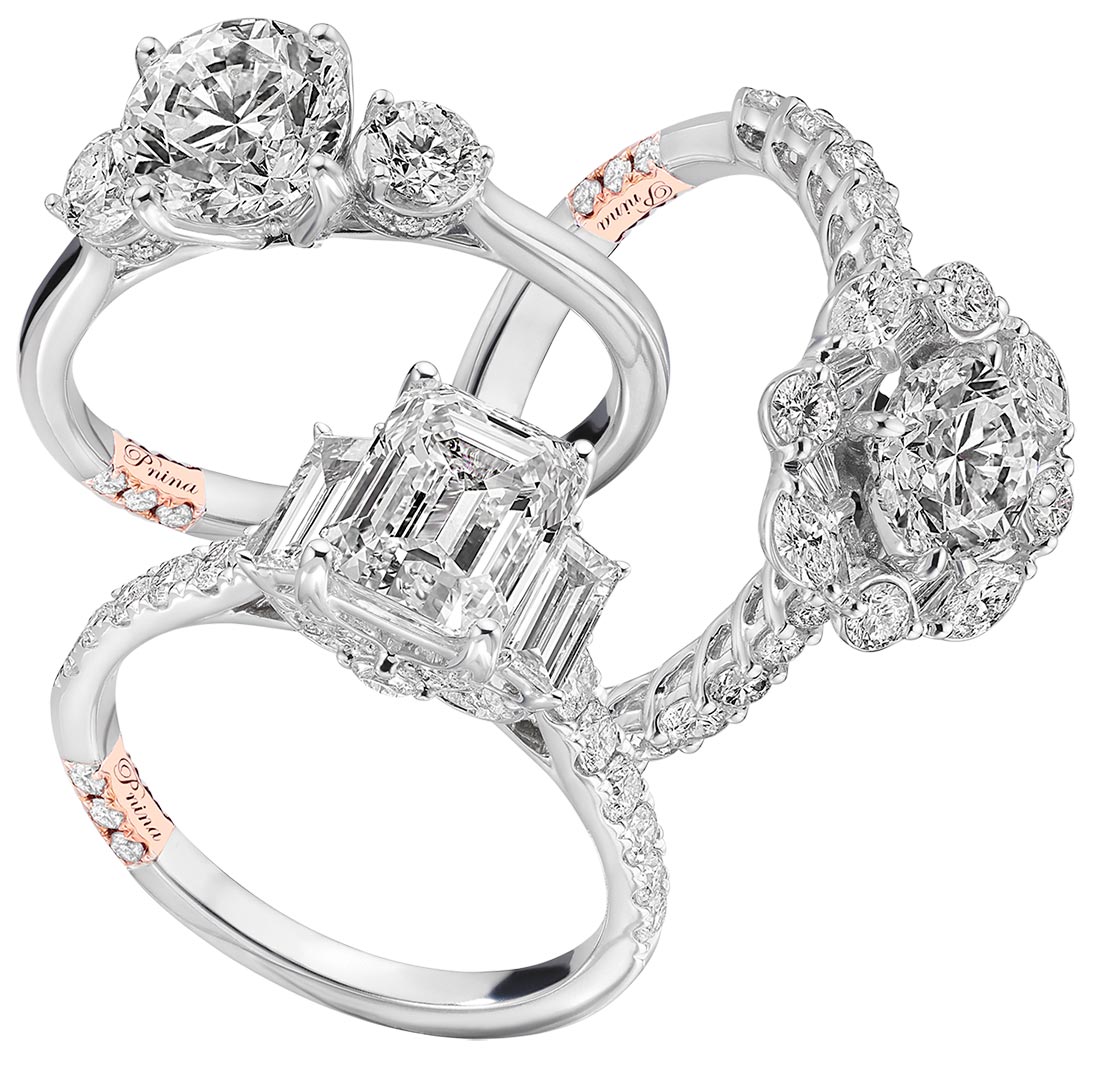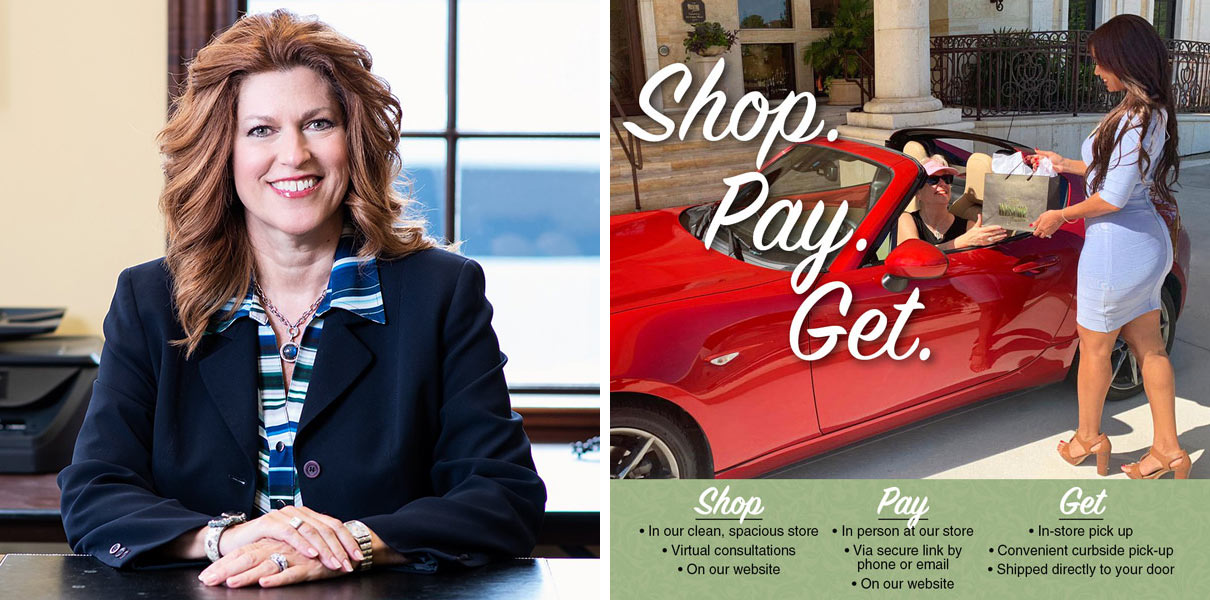Recently, El Paso, Texas, jeweler Susan Eisen had her first-ever virtual appointment with a client—in Georgia.
“It was so much fun,” says Eisen, owner of Susan Eisen Fine Jewelry & Watches. “I asked the woman, ‘How did you find me?’ She was looking around [online] and liked what I had. It was someone I never would have met otherwise.”
Eisen is just one of many retailers who has had to explore new sales territory during the COVID-19 pandemic.

For many independent jewelers—whose ranks have shrunk over the past decade—the COVID crisis has been a gut check. When most of the country went into lockdown, the industry seemed poised for a shakeout. Jewelers faced a choice: They could either give up their business, or they could pivot and try to roll with some very sharp punches.
And while plenty of stores did close, a surprising number not only weathered the storm but also prospered. Since last year, we’ve seen jewelers embrace a long list of new tools—from the obvious, such as e-commerce and social selling, to some they never would have considered previously, like curbside pickup, home delivery, and virtual consultations. The boldest have added high-tech tools like augmented reality, which lets customers “try on” items without touching them.
Erich Jacobs, president of the Jewelers Board of Trade, says the pandemic has separated jewelers that were able to adapt from those that couldn’t. “When we looked at the retailers that are failing, almost always they were the ones that had no online presence, no social postings, no adaptability,” he says. “They really were just a brick-and-mortar store.”

Holly Wesche, owner of Wesche Jewelers in Melbourne, Fla., agrees that “COVID either forced people forward, or forced you into a shell.”
For Wesche, it sparked real change.
The shift toward online “was happening, we all knew it, but you know how we are in the jewelry industry: We take our time,” Wesche says. “We thought of ourselves as a traditional brick-and-mortar store. We did have a website and we were working on it, but we weren’t in a big rush. But this made us get up to speed real quick.”
Perhaps no seller has embraced omnichannel more than Signet, the industry’s largest retailer. The company’s good holiday results were almost solely driven by online sales, which jumped 60.8%.
Signet’s success wasn’t an anomaly. All in all, 2020 turned out to be a surprisingly decent—even good—year for the jewelry industry. That might be because consumers, unable to spend on travel, had more discretionary dollars. Or because these emotionally intense times spurred the purchase of meaningful gifts.
“The number one thing we hear from customers is, ‘It’s a shutdown, but it’s still my wife’s birthday,’” said Andrew Siegel, director of business strategy and operations for Princeton, N.J.–based Hamilton Jewelers, on a webinar held by CIBJO, the World Jewellery Confederation.
At the National Retail Federation’s recent virtual event, Saks Fifth Avenue president and CEO Marc Metrick suggested another possibility: Buying high-end products is fun.
“[Consumers] view luxury as the comfort food of retail,” he said, according to CNBC. “Why else would you buy pumps from a luxury brand when you’re working at home and on Zoom all day? You do it because you love fashion, and it’s your Oreo cookie. It’s something that’s going to make you feel better.”
Independent jewelers were also helped in 2020 by customers’ desire to shop local and support stores that were the backbones of their communities.
Katherine Cullen, senior director of industry and consumer insights for the NRF, says this is the first time that “local retailers” showed up as a leading option in her group’s Valentine’s Day shopping survey. “What we’re living through makes people think a lot about their community,” she says. “And they want to support local businesses.”
The big question is: Will these trends continue when the pandemic finally ends?
“I have no doubt there will be a slight pendulum swing back to brick-and-mortar,” Jacobs says. “But my experience in other industries is that moving online is a one-way street. There was a thought that people would never buy flat-screen TVs online. That’s no longer true.”
Cullen believes, post-pandemic, customers will return to stores—but only those that have something different to offer. “All our research says that people want that in-person experience,” she says. “They want a personal connection. They view shopping as entertainment. But the experience has to be differentiated. And it has to be convenient.

“Curbside pickup, local delivery—all of those are here to stay,” she adds. “Retailers realize now you can’t just rely on the store. You can’t just rely on online. You have to have all of them.”
Whatever happens with consumer behavior, Wesche believes her business has been permanently changed. “This really gave us a kick in the butt,” she says. “We had to get really creative and reinvent ourselves. And I think we are better for it.”
• • •
Not Just A Fad
Jewelers and retail experts say the pandemic has sparked a number of new behaviors that are bound to stick:
Virtual Consultations
At the beginning of 2020, most jewelers did not have a chat function on their website—never mind one staffed by a live full-time attendant, with video capability. Now, that’s almost become a requirement.
On the CIBJO webinar, Hamilton Jewelers’ Andrew Siegel said that, pre-pandemic, “about 80 to 90% of our clients did pre-shopping online before coming into a store for a consultation.
“Now, the consultation portion has became digital as well,” he said. “The time that we have to be face-to-face with our consumer is relatively compressed.”

When 2020 began, virtual consultations were not a big part of Signet’s business. One year later, the company has hosted nearly 1 million of them. In fact, CEO Gina Drosos has credited the company’s growth in online sales to its online appointment offerings.
What’s more, many consumers are starting to expect retailers to provide Zoom-style consults.
During a recent JCK focus group, Molly, a 25-year-old marketer from North Carolina, said that when she goes on jewelry sites, “I often want more information, but it takes time to get that information. Having [someone to talk to is] really helpful, especially now, but even at other times when you can’t get to a store.”
More Appointments, Less Browsing
With local ordinances limiting the number of people allowed in a store and foot traffic down, some jewelers have started shifting toward prescheduled appointments with customers. Some have even become appointment-only.

Wesche Jewelers owner Holly Wesche recently held a closed-to-the-public store event, something she never would have dreamed of doing before. “The sales team booked appointments the whole day,” she says. “Not only was it every bit as successful as [our traditional events], the customers loved it, the vendors loved it, the sales team loved it. There was no ‘I have to finish up with Betty, so now here comes Mary, and now I have to change a watch battery.’ We could focus on the customer.”
When shoppers do wander into a retail establishment, they tend to keep their visits brief.
Siegel said that about half of his store’s in-person customers have an item picked out before they walk in the door. “If you’re going into a jewelry store in the middle of a pandemic, you know what you want,” he said. “There’s less browsing.”
The National Retail Federation’s Katherine Cullen says in-person shopping has become “more intention-based.
“Consumers are narrowing down their options,” she says. “They are visiting one store, rather than a few.”
One diamond dealer tells JCK this was the first time he sold nearly every stone that he sent out on consignment—mainly because when consumers came into a store for a diamond, they bought it.
Selling Over Social
When JCK showed its focus group of seven 20-something women a series of TV commercials, most hadn’t seen them. They rarely watched TV. But they did look at a lot of jewelry—mostly through Instagram.
“I Instagram-shop a lot off of what I see influencers buy,” said Kelley, 26, a data analyst in Delaware. “It’s probably what I bought most this year, especially in quarantine.”
Nicky Mehta, president of Diamond Days, a New York City–based wholesaler, says he’s impressed by how many jewelers now make sales through Instagram and other social channels. “The best ones realize they have to,” he says. “That’s where the consumer is now. They are not in the malls. They are on the computer.”
Melanie Grant, editor of 1843, the luxury magazine from The Economist, said on the CIBJO webinar: “Instagram is a gift for jewelers. It’s so visual, and it’s so positive, compared to the other platforms. I’m always surprised by the number of jewelry brands who aren’t on Instagram. It’s more important, at this point, than having a store.”
(Woman with open sign at top & credit card image on homepage: Getty Images)

